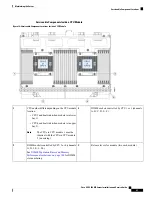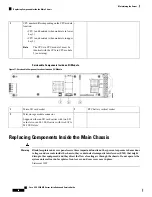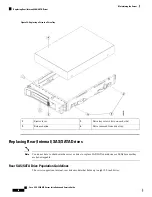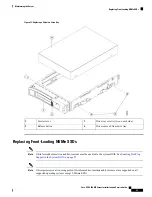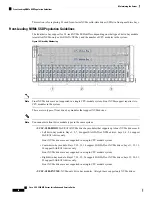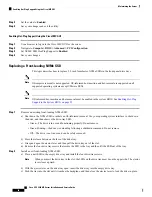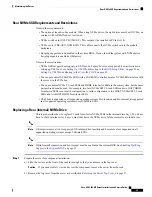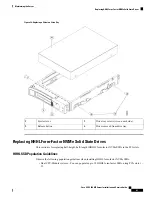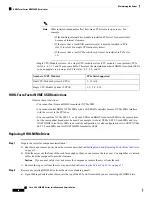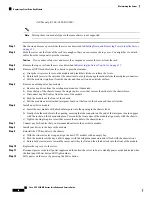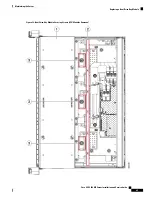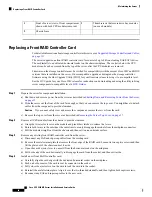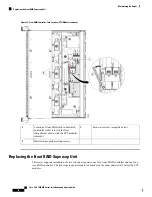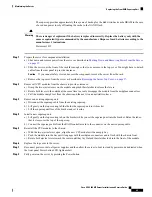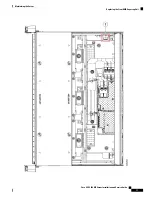
Step 3
Set the value to
Enabled
.
Step 4
Save your changes and exit the utility.
Enabling Hot-Plug Support Using the Cisco IMC GUI
Step 1
Use a browser to log in to the Cisco IMC GUI for the server.
Step 2
Navigate to
Compute > BIOS > Advanced > PCI Configuration
.
Step 3
Set NVME SSD Hot-Plug Support to
Enabled
.
Step 4
Save your changes.
Replacing a Front-Loading NVMe SSD
This topic describes how to replace 2.5-inch form-factor NVMe SSDs in the front-panel drive bays.
OS-surprise removal is not supported. OS-informed hot-insertion and hot-removal are supported on all
supported operating systems except VMware ESXi.
Note
OS-informed hot-insertion and hot-removal must be enabled in the system BIOS. See
Enabling Hot-Plug
Support in the System BIOS, on page 55
.
Note
Step 1
Remove an existing front-loading NVMe SSD:
a) Shut down the NVMe SSD to initiate an OS-informed removal. Use your operating system interface to shut down
the drive, and then observe the drive-tray LED:
• Green—The drive is in use and functioning properly. Do not remove.
• Green, blinking—the driver is unloading following a shutdown command. Do not remove.
• Off—The drive is not in use and can be safely removed.
b) Press the release button on the face of the drive tray.
c) Grasp and open the ejector lever and then pull the drive tray out of the slot.
d) Remove the four drive tray screws that secure the SSD to the tray and then lift the SSD out of the tray.
Step 2
Install a new front-loading NVMe SSD:
a) Place a new SSD in the empty drive tray and install the four drive-tray screws.
When you insert the drive tray in the slot, the LEDs on the drive tray must be on the upper side. The ejector
lever closes upward.
Note
b) With the ejector lever on the drive tray open, insert the drive tray into the empty drive bay.
c) Push the tray into the slot until it touches the backplane, and then close the ejector lever to lock the drive in place.
Cisco UCS C480 M5 Server Installation and Service Guide
56
Maintaining the Server
Enabling Hot-Plug Support Using the Cisco IMC GUI


